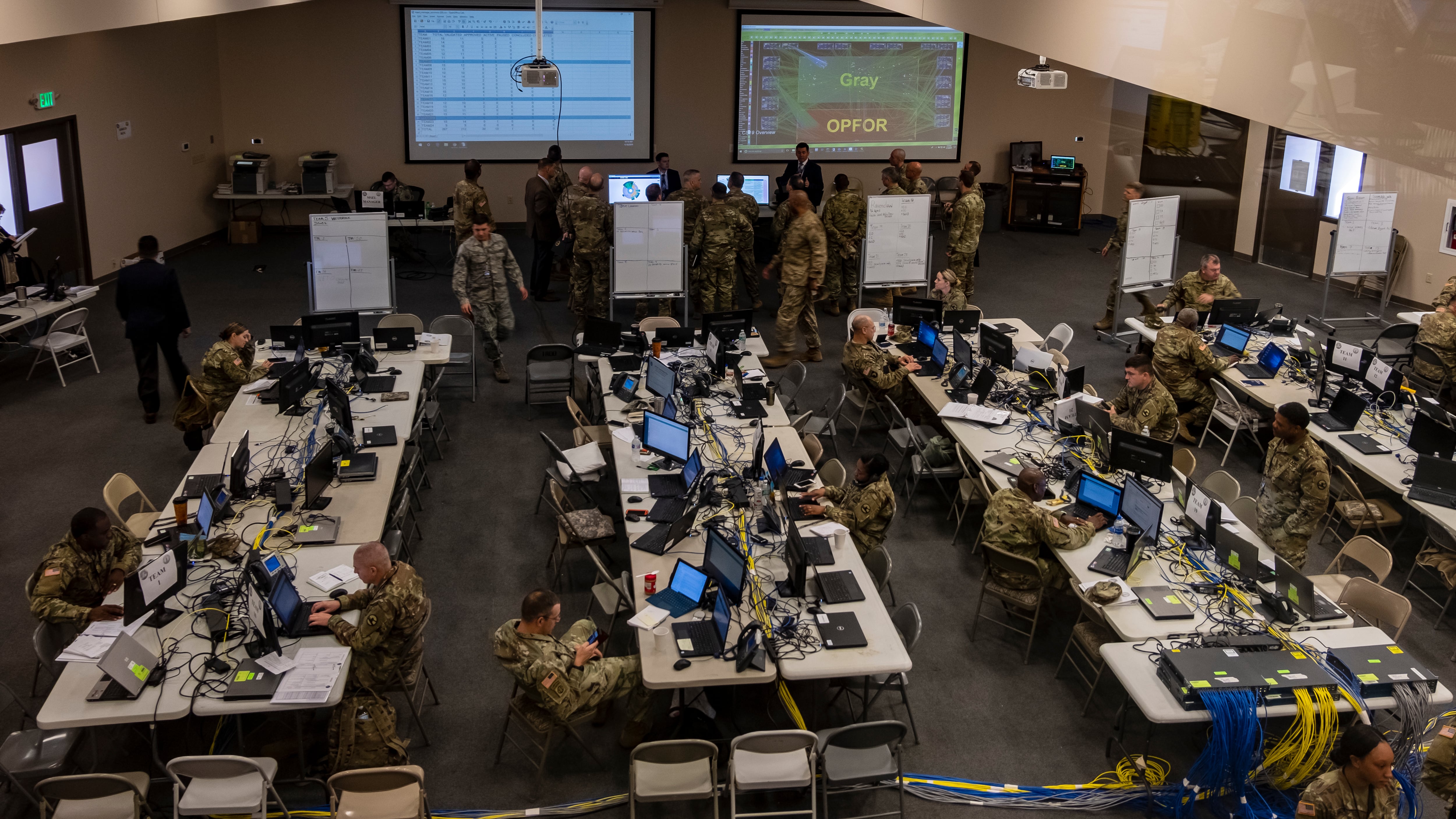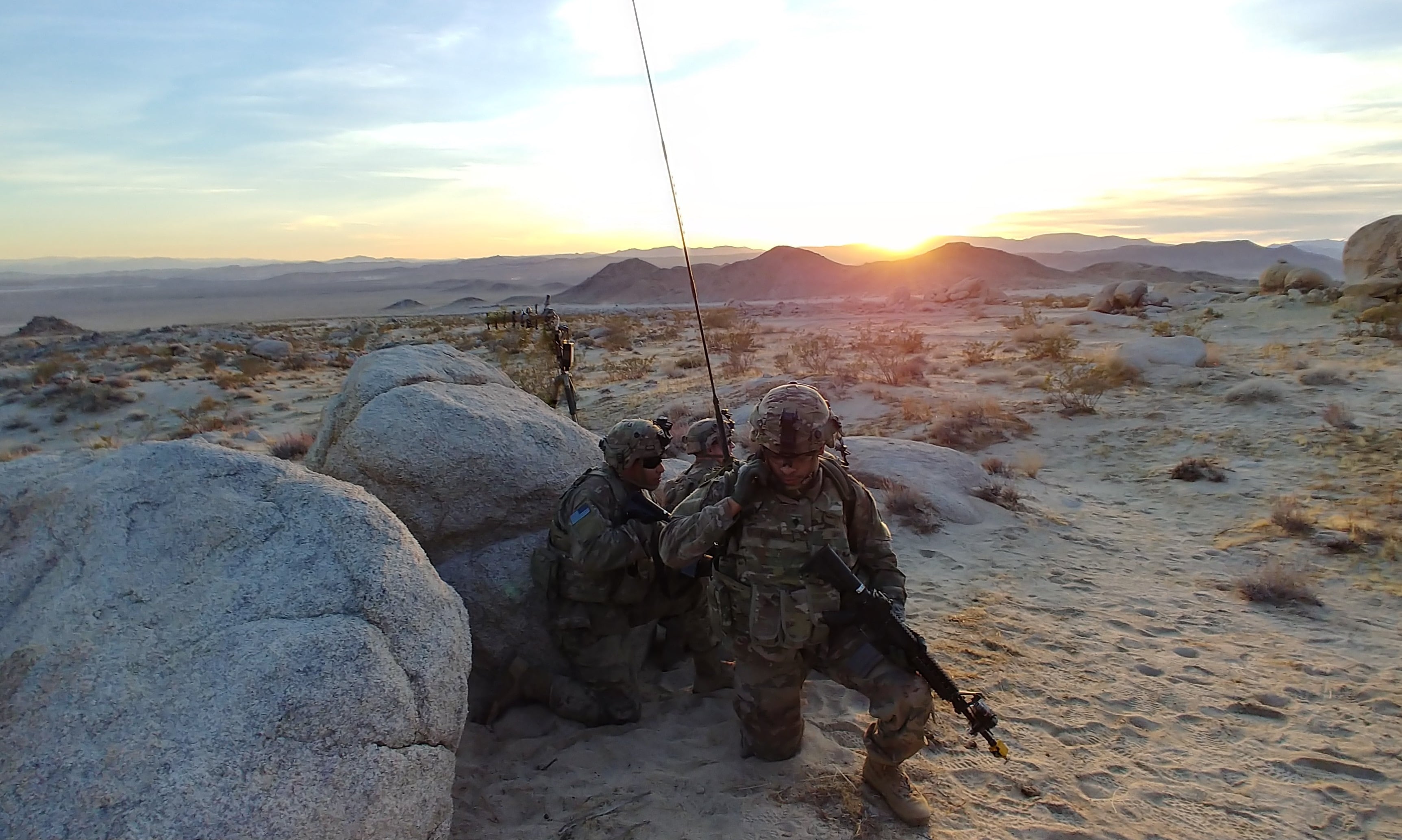WASHINGTON — Army Cyber Command is moving away from “information warfare” as a concept, opting instead for “information advantage," which leaders hope will create what they describe as “decision dominance.”
Army Cyber Command has spent two years integrating cyber, electronic warfare and information operations with new units under the banner of information warfare in order to offset adversary capabilities.
RELATED

While the command thought the right concept was “information warfare,” commander Lt. Gen. Stephen Fogarty said over time, the right concept has evolved to something more like information advantage.
This information advantage will lead to “decision dominance.”
“Decision dominance is a desired state in which a commander can sense, understand, decide and act faster and more effectively than an adversary,” Fogarty said during the virtual CEMAlite Conference Sept. 29 hosted by the Association of Old Crows. “That allows the commander to gain and maintain position of relative advantage. This is not only the cyber domain, it’s not only in the [radio frequency] spectrum, but it’s in the larger or the greater information environment.”
Fogarty, as well as top Army leadership, have previously described the eventual push for ARCYBER to be renamed to something akin to Army Information Warfare Command.
While a name change is still in the works, Fogarty said command leaders are continuing to evolve their concepts based on real world operations.
“As we continue to refine this, [and] I’m not saying the final landing spot is information advantage, that’s where we’re at right now, I think it’s [a] maturation of where we were even six months ago,” he said. “It was informed by the operations that we’ve conducted, really over the last 18 months or so. Almost every operation we’re conducting, whether it’s defensive or offensive, what we’ve found is when we have looked at it much more holistically than just kind of a cyber piece of this, what we’ve been able to do is amplify the effects of that operation.”
He noted that leaders have not yet made a decision and ARCYBER will continue to work with the Combined Arms Center to refine it more.
In the command’s 10-year plan penned earlier this summer, Fogarty and co-author Bryan Sparling, an adviser, described the need for change necessitated by the adversary.
“The stunning social media-powered rise of ISIS [the Islamic State group] in 2015, Russia’s interference in the 2016 US Presidential election, Iran’s increasing digital belligerence, and China’s disinformation surrounding the COVID-19 pandemic are upending that perception and igniting a conversation across the defense establishment regarding appropriate roles for the uniformed armed services in this environment of unprecedented information warfare,” they wrote.
“The Army is currently evaluating whether [operations in the information environment], [information warfare], or some other concept should replace IO to describe an expanded Army mission in the IE. We are likewise considering whether Army Cyber Command (ARCYBER) should change its name to more accurately reflect the full spectrum of its mission portfolio. Regardless, ARCYBER is building upon a ten-year foundation of continual innovation, and accelerating its modernization efforts to enable information age Army operations across tactical, operational, and strategic echelons.”
To provide information advantage for commanders, and ultimately decision dominance, will require a raft of capabilities to include cyber, intelligence, psychological operations, public affairs and space.
One of the primary goals is ensuring the network, which Fogarty refers to as the foundational weapon system, is available so commanders can achieve overmatch of the adversary. This overmatch can be kinetic or information, he said.
Mark Pomerleau is a reporter for C4ISRNET, covering information warfare and cyberspace.








